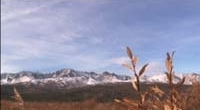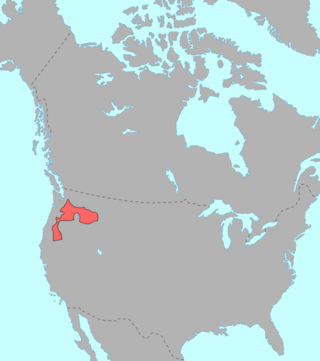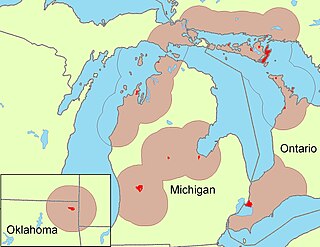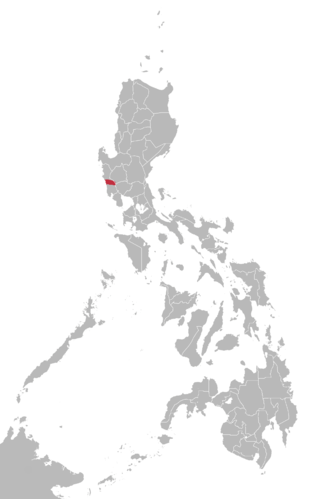In phonetics, a nasal, also called a nasal occlusive or nasal stop in contrast with an oral stop or nasalized consonant, is an occlusive consonant produced with a lowered velum, allowing air to escape freely through the nose. The vast majority of consonants are oral consonants. Examples of nasals in English are, and, in words such as nose, bring and mouth. Nasal occlusives are nearly universal in human languages. There are also other kinds of nasal consonants in some languages.

Tanacross is an endangered Athabaskan language spoken by fewer than 60 people in eastern Interior Alaska.
Yoruba is a language that is spoken in West Africa, primarily in Southwestern and Central Nigeria. It is spoken by the Yoruba people. Yoruba speakers number roughly 47 million, including about 2 million second-language speakers. As a pluricentric language, it is primarily spoken in a dialectal area spanning Nigeria, Benin, and Togo with smaller migrated communities in Côte d'Ivoire, Sierra Leone and The Gambia.
African-American Vernacular English (AAVE) is the variety of English natively spoken, particularly in urban communities, by most working- and middle-class African Americans and some Black Canadians. Having its own unique grammatical, vocabulary and accent features, AAVE is employed by middle-class Black Americans as the more informal and casual end of a sociolinguistic continuum. However, in formal speaking contexts, speakers tend to switch to more standard English grammar and vocabulary, usually while retaining elements of the non-standard accent. AAVE is widespread throughout the United States, but is not the native dialect of all African Americans, nor are all of its speakers African American.
In phonetics, nasalization is the production of a sound while the velum is lowered, so that some air escapes through the nose during the production of the sound by the mouth. An archetypal nasal sound is.
ǂʼAmkoeAM-koy, formerly called by the dialectal name ǂHoan, is a severely endangered Kxʼa language of Botswana. West ǂʼAmkoe dialect, along with Taa and Gǀui, form the core of the Kalahari Basin sprachbund, and share a number of characteristic features, including the largest consonant inventories in the world. ǂʼAmkoe was shown to be related to the Juu languages by Honken and Heine (2010), and these have since been classified together in the Kxʼa language family.

The Tlingit language is spoken by the Tlingit people of Southeast Alaska and Western Canada and is a branch of the Na-Dene language family. Extensive effort is being put into revitalization programs in Southeast Alaska to revive and preserve the Tlingit language and culture.

Iñupiaq or Inupiaq, also known as Iñupiat, Inupiat, Iñupiatun or Alaskan Inuit, is an Inuit language, or perhaps group of languages, spoken by the Iñupiat people in northern and northwestern Alaska, as well as a small adjacent part of the Northwest Territories of Canada. The Iñupiat language is a member of the Inuit-Yupik-Unangan language family, and is closely related and, to varying degrees, mutually intelligible with other Inuit languages of Canada and Greenland. There are roughly 2,000 speakers. Iñupiaq is considered to be a threatened language, with most speakers at or above the age of 40. Iñupiaq is an official language of the State of Alaska, along with several other indigenous languages.
Chuukese, also rendered Trukese, is a Chuukic language of the Austronesian language family spoken primarily on the islands of Chuuk in the Caroline Islands in Micronesia. There are communities of speakers on Pohnpei, and Guam. Estimates show that there are about 45,900 speakers in Micronesia.

Nez Perce, also spelled Nez Percé or called nimipuutímt, is a Sahaptian language related to the several dialects of Sahaptin. Nez Perce comes from the French phrase nez percé, "pierced nose"; however, Nez Perce, who call themselves nimíipuu, meaning "the people", did not pierce their noses. This misnomer may have occurred as a result of confusion on the part of the French, as it was surrounding tribes who did so.
The phonological system of the Polish language is similar in many ways to those of other Slavic languages, although there are some characteristic features found in only a few other languages of the family, such as contrasting postalveolar and alveolo-palatal fricatives and affricates. The vowel system is relatively simple, with just six oral monophthongs and arguably two nasals in traditional speech, while the consonant system is much more complex.

Ottawa or Odawa is a dialect of the Ojibwe language spoken by the Odawa people in southern Ontario in Canada, and northern Michigan in the United States. Descendants of migrant Ottawa speakers live in Kansas and Oklahoma. The first recorded meeting of Ottawa speakers and Europeans occurred in 1615 when a party of Ottawas encountered explorer Samuel de Champlain on the north shore of Georgian Bay. Ottawa is written in an alphabetic system using Latin letters, and is known to its speakers as Nishnaabemwin 'speaking the native language' or Daawaamwin 'speaking Ottawa'.

Joy F. Ridderhof was an American missionary.
Mochoʼ is a Mayan language spoken by the Mochoʼ people of Chiapas, Mexico. A source stated that it was known as Qatokʼ, although this name has not received wide acceptance among the native speakers and the language, which is known as Mochoʼ by both the Mochoʼ people and the Mexican government. Mochoʼ has a dialect called Tuzantec (Muchuʼ) spoken in Tuzantan, Chiapas. Alongside Jakaltek, Qʼanjobʼal, Chuj and Tojol-Abʼal, the Mochoʼ language is part of the Qʼanjobalan group from the western branch of Mayan languages.

Botolan is a Sambalic language spoken by 32,867 Sambal, primarily in the Zambal municipalities of Botolan and Cabangan in the Philippines. Language status is 5 (developing).
The Tailenders is a 2005 documentary directed, produced and narrated by Adele Horne, an American independent filmmaker based out of Los Angeles. It is in limited release and has been screened in the U.S., Mexico and Scotland. According to a P.O.V. press release, The Tailenders was broadcast nationally in the US on PBS on Tuesday, July 25, 2006.
Akha is the language spoken by the Akha people of southern China, eastern Burma, northern Laos, and northern Thailand.
Mota is an Oceanic language spoken by about 750 people on Mota island, in the Banks Islands of Vanuatu. It is the most conservative Torres–Banks language, and the only one to keep its inherited five-vowel system intact while also preserving most final vowels.

Kaluli is a language spoken in Papua New Guinea. It is a developing language with 3,100 speakers. Some people refer to this language as Bosavi, however the people themselves refer to the language as Kaluli. There are four dialects, Ologo, Kaluli, Walulu, and Kugenesi. The differences between the dialects are not clear. Their writing system uses the Latin script. Kaluli belongs to the Trans-New Guinea language family. Kaluli was first analyzed by Murray Rule in 1964 who wrote a preliminary phonological and morphological analysis. A dictionary of Kaluli has been compiled by Schieffelin and Feld (1998).

Dargwa is a Northeast Caucasian language spoken by the Dargin people in the Russian republic Dagestan. This article discusses the literary dialect of the dialect continuum constituting the Dargin languages. It is based on the Aqusha and Urakhi dialects of Northern Dargin.











